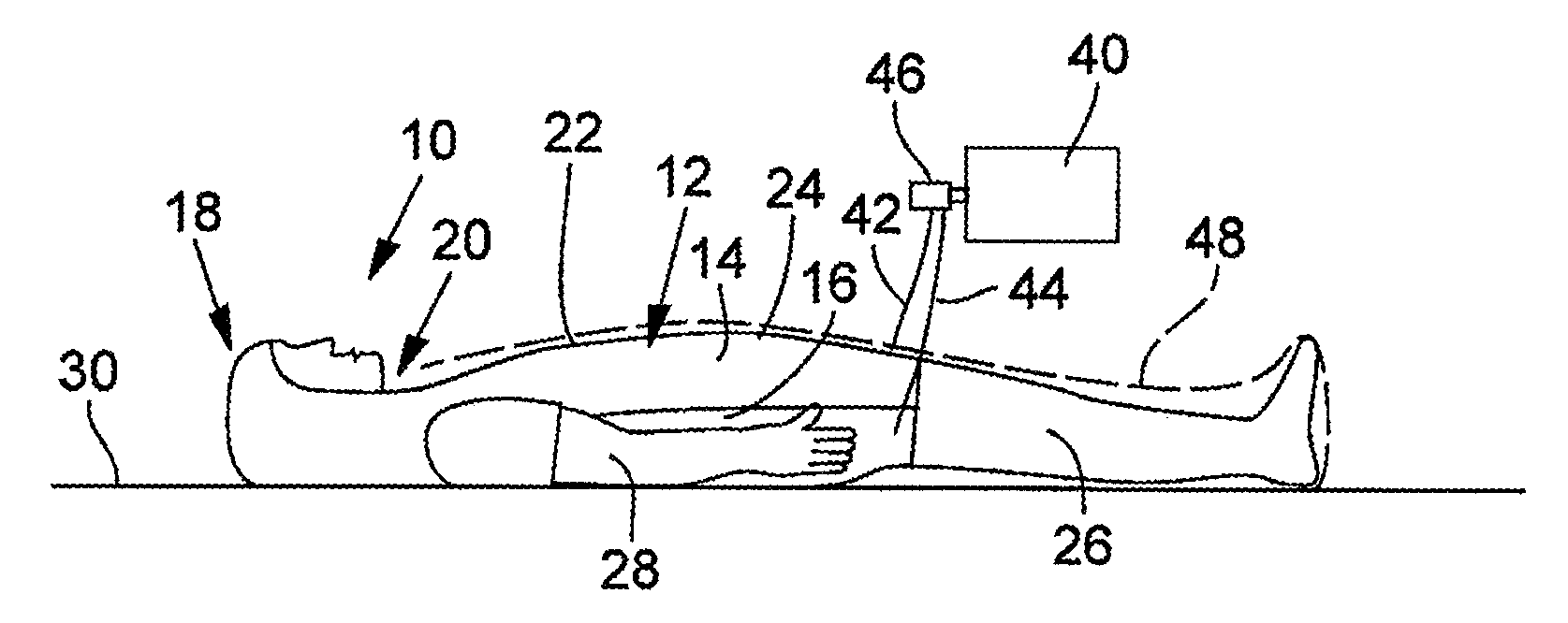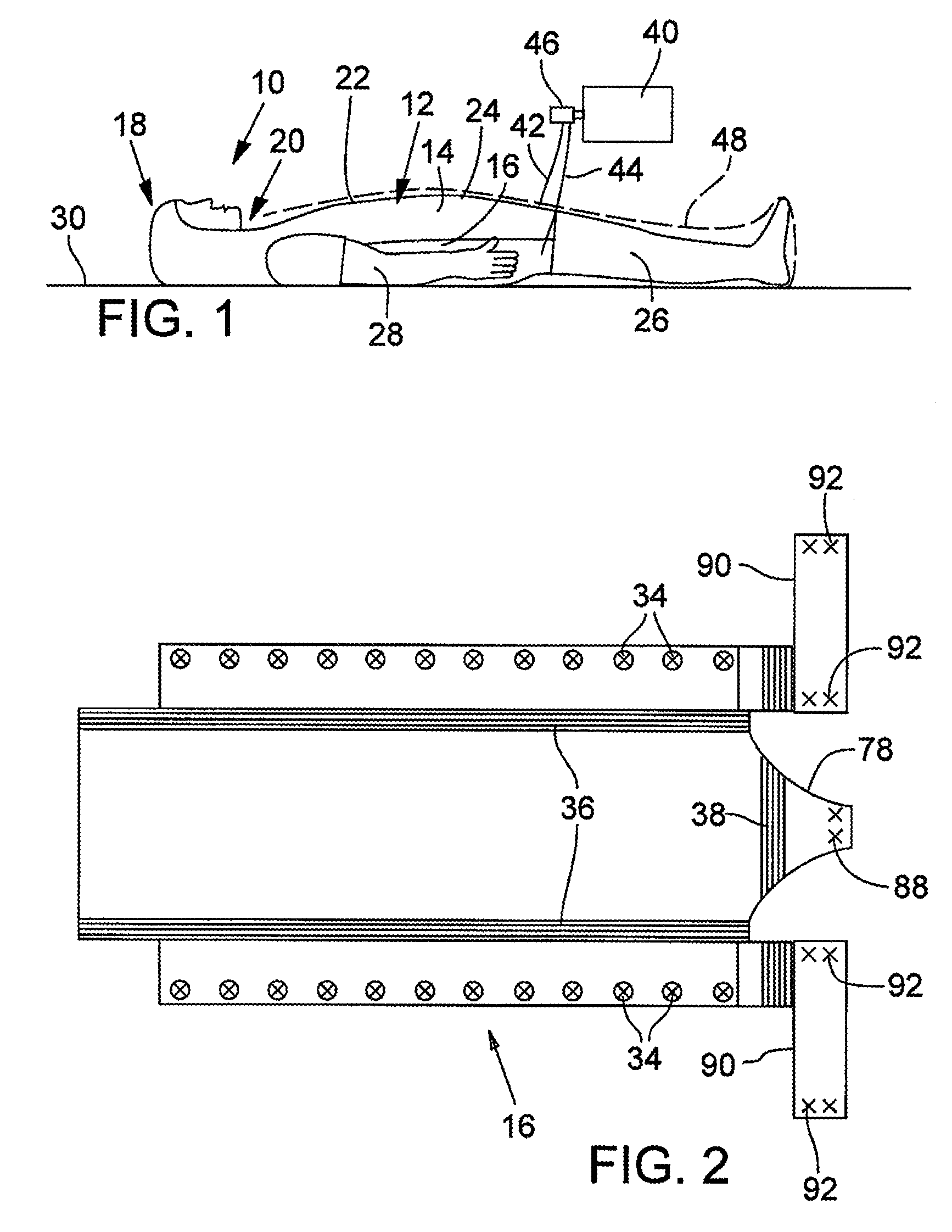Heating system to alleviate hypothermia
a heat exchanger and hypothermia technology, applied in the field of heat exchangers for maintaining or restoring normothermia, to achieve the effects of reducing the risk of hypothermia, facilitating patient insertion, and preventing significant stray heat in the limbs
- Summary
- Abstract
- Description
- Claims
- Application Information
AI Technical Summary
Benefits of technology
Problems solved by technology
Method used
Image
Examples
Embodiment Construction
[0017]FIG. 1 illustrates an injured person 10 enclosed in a medical thermal cover of an exemplar aggressive embodiment 12. The thermal cover 12 may be comprised of a top portion 14 (shown in top view in FIG. 3) and a bottom portion 16 (shown in top view in FIG. 2).
[0018]It is determined that major portions (Zones) of four areas of a person's body have optimum peripheral and deep blood flow for dispensing heat: (a) most or all of the head 18 (excluding the face); (b) most or all of the neck 20; (c) most or all of the chest 22 (including the shoulders and armpits as well); and (d) most or all of the abdomen 24. The latter four Zones may be in the upper body portion (subject supine as shown in FIG. 1) or the front side body portion (subject upright). Thus, the thermal cover may be split to provide top portion 14 and bottom portion 16 whereby the top portion 14 of the thermal cover contains sizeable sub-areas (Zones) that constitute the four Primary Zones for active heating, while the b...
PUM
 Login to View More
Login to View More Abstract
Description
Claims
Application Information
 Login to View More
Login to View More - R&D
- Intellectual Property
- Life Sciences
- Materials
- Tech Scout
- Unparalleled Data Quality
- Higher Quality Content
- 60% Fewer Hallucinations
Browse by: Latest US Patents, China's latest patents, Technical Efficacy Thesaurus, Application Domain, Technology Topic, Popular Technical Reports.
© 2025 PatSnap. All rights reserved.Legal|Privacy policy|Modern Slavery Act Transparency Statement|Sitemap|About US| Contact US: help@patsnap.com



